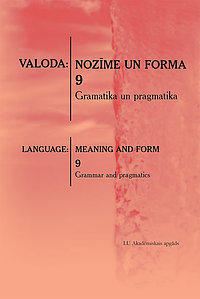Passive constructions in Lithuanian and Latvian
Passive constructions in Lithuanian and Latvian
Author(s): Kristine Levane-PetrovaSubject(s): Language studies, Phonetics / Phonology
Published by: Latvijas Universitātes Akadēmiskais apgāds
Keywords: passive voice; past and present passive participle; parallel corpus;
Summary/Abstract: The aim of this article is to analyze passive constructions in Latvian and Lithuanian. The correspondences of the Lithuanian past passive and present passive participles as the predicates (that together with the auxiliary constitute the passive forms in Lithuanian) in Latvian were analyzed in the Lithuanian-Latvian-Lithuanian parallel corpus (LiLa). This research is limited to the analysis of the correspondences of Lithuanian passive constructions in the passive voice in Latvian. The analyzed data show that the compound tense forms of the passive in Latvian are the first correspondence of the Lithuanian passive constructions with the past passive participle as a predicate. These constructions are in the passive voice in both languages, and both have resultative meaning (stative passive). The simple tense forms of the passive in Latvian are the second correspondence of the Lithuanian passive constructions with the present passive participle as a predicate. These constructions are also in the passive voice in both languages, and both have process meaning (dynamic passive). This study proved that the passive voice constructions are more often used in Lithuanian in comparison with Latvian, as many correspondences of Lithuanian passive voice constructions were identified in the active voice in Latvian.
Journal: Valoda: nozīme un forma
- Issue Year: 2018
- Issue No: 9
- Page Range: 178-190
- Page Count: 13
- Language: English

